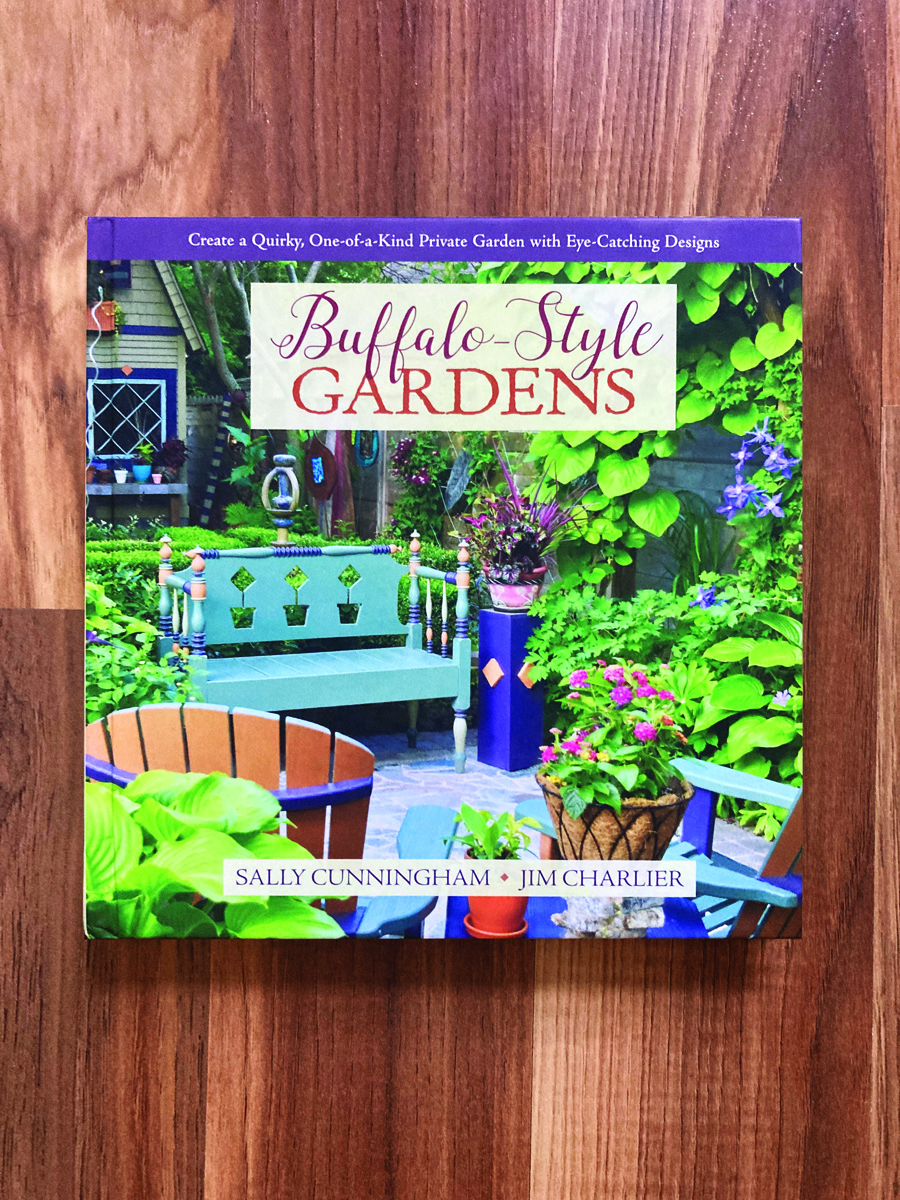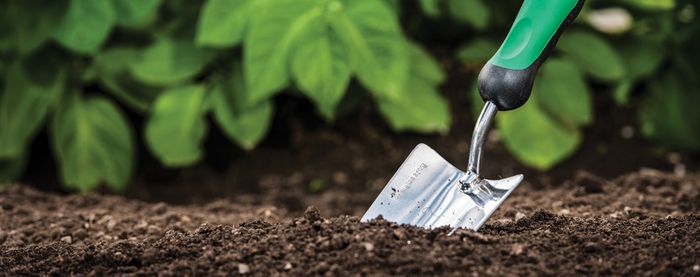10 Drought-Tolerant Shrubs
If these thrived in the driest Alabama summer in a hundred years, think how well they’ll do for you

A few years back, we were hit with the worst drought Alabama had seen in 100 years. It turned out to be the best opportunity we had to see how the plants in our non-irrigated test gardens held up during and after the trauma of extreme heat and drought. With our notebooks and pencils in hand, we watched and recorded as the thermometer soared above 100°F 14 times that season. We continued to observe our display gardens throughout the following season to see if the heat and lack of water altered their show compared to the previous years. The results of the 2007 drought proved to us what shrubs are the sturdiest and still stunning.
Learn more: 4 Tips for Getting the Garden Through Drought Sustainably
Because we are constantly faced with the challenge of drought, we have committed ourselves for the past 15 years to identifying traits in shrubs like drought tolerance and performance history in addition to their natural attraction. Here are the standout shrubs that still look sexy in the scorching, dry heat.
1. Big blooms in summer heat
Name: Panicle hydrangea (Hydrangea paniculata* and cvs.)
USDA Hardiness Zones: 4 to 8
Size: 12 to 20 feet tall and wide
Conditions: Full sun to partial shade; well-drained soil
The lush panicle hydrangea is a surprising drought-hardy stunner. It peaks at the height of summer with magnificent 6- to 15-inch-long white blooms that cover arching limbs. They change from greenish white to pinkish red. In fall, the leaves drop, leaving bare branches weighted with large dried blooms into winter. Varieties worth examining include ‘Limelight’ (pictured) and ‘Little Lamb’.
Without water: These shrubs bloomed despite the extreme heat we experienced in 2007. We were amazed that they not only retained all their leaves but also held those leaves fresh and turgid. It seems that the only soil these hardy shrubs will not tolerate is one that is soggy.
2. A prespring kiss of color
Name: Flowering quince (Chaenomeles speciosa and cvs.)
Zones: 5 to 9
Size: Up to 8 feet tall and 15 feet wide
Conditions: Full sun to partial shade; well-drained, slightly acidic soil
Who doesn’t want a plant that will heat up the garden in late winter with the promise of spring? The beautiful blossoms of flowering quince are sure to get your heart pumping. Bare branches are covered with cottony blooms on ‘Jet Trail’ or kissed with a vibrant lipstick red on ‘Texas Scarlet’ (pictured). As the flowers fade in spring, the foliage begins to appear (inset). Typically, the bare branches are a stunning gold or red in fall, when they occasionally rebloom again. The likeliness of a second bloom is increased by a dry spell in late summer followed by plenty of fall rain.
Without water: During the drought of 2007, this plant dropped its leaves during the hottest part of summer. New foliage sprouted in fall when cooler temperatures and rain returned. Even with the trauma of drought, it supplied us with as many showy blooms as any other year.
3. A sure show-off, even in dry shade
Name: Mapleleaf viburnum (Viburnum acerifolium)
Zones: 4 to 8
Size: 3 to 6 feet tall and 4 feet wide
Conditions: Full sun to partial shade; fertile, well-drained soil
With mapleleaf viburnum, the show starts in early summer, when it begins to produce puffy white clusters of flowers. The blooms are followed by red berries that darken to purple-black. In fall, the maple-shaped leaves transform from bright green to shades of yellow, orange (inset), rose-red, or purple.
Without water: Our mapleleaf viburnums survived the extreme drought in a shady spot. We did not note a single variation in growth or performance. Who doesn’t want a stellar plant to fill a dry-shade spot? With a little sun, mapleleaf viburnum will produce more flowers and berries.
4. Exceptional in wet or dry soil
Name: Winterberry (Ilex verticillata and cvs.)
Zones: 5 to 8
Size: Up to 15 feet tall and wide
Conditions: Full sun to partial shade; well-drained, acidic soil
We’re not sure who the bigger fan of winterberry is: us or the fat mockingbird that spends the winter trying to eat every vibrant berry from the leafless stems. The fruit begin to ripen in late summer when the leaves are still lush. They hold onto the branches through the fall—even after the foliage changes color and drops. The straight species of this plant (pictured) is spectacular, but if you’re short on space, ‘Red Sprite’ is a snazzy smaller option at 3 to 5 feet tall and wide.
Without water: It is well known that winterberry tolerates wet soils, so we were amazed at its ability to perform also in exceptionally hot and dry conditions. In 2007, we noted earlier fall color and leaf drop. We also noted fruit came into full color sooner, but there was no change in the amount or show of the berries.
5. Flaunt fall-like foliage all year
Name: Heavenly bamboo (Nandina domestica* and cvs.)
Zones: 6 to 11
Size: Up to 6 feet tall and 5 feet wide
Conditions: Full sun to partial shade; well-drained soil
There isn’t a time that heavenly bamboo doesn’t strut its stuff. Tall, well-behaved, straight stems sport fall-like foliage all year. In spring, white sprays of flowers appear, followed by clusters of berries that turn a vibrant red in winter. ‘Gulf Stream’ (pictured) doesn’t produce many, if any, berries, but it is still our favorite because it’s compact and flaunts a flush of flashy bronze growth in spring.
Without water: There is nothing common about how well heavenly bamboo handles extreme temperatures without water. In the terrible summer of 2007, it maintained the same vigor and intensity of color as any other year.
6. A shrub that always looks good
Name: ‘Anthony Waterer’ spirea (Spiraea × bumalda ‘Anthony Waterer’, syn. Spiraea japonica* ‘Anthony Waterer’)
Zones: 4 to 9
Size: Up to 5 feet tall and wide
Conditions: Full sun; fertile, well-drained soil
‘Anthony Waterer’ is attractive en masse and shines when peppered in a border. No wonder it’s popular. New growth is bronze to red but matures to green. Pink blooms cover the shrub late spring to early summer. Remove spent blooms before they turn brown to increase the chance of a second show of flowers.
Without water: In a typical year, the blooms fade midsummer and new growth follows immediately. During the drought of 2007, new growth did not appear right after the blossoms faded; the shrub went into a short semidormant period. As soon as fall brought cooler temperatures and rainfall, however, the shrub was refreshed with new growth and showed no visible damage.
7. Versatile wands of color
Name: Chaste tree (Vitex agnus-castus* and cvs.)
Zones: 6 to 9
Size: 8 to 15 feet tall and 12 to 20 feet wide
Conditions: Full sun; well-drained soil
There is a reason this perky heirloom is still around. Showstopping, fragrant, cone-shaped blooms shoot out from the ends of upright branches in midsummer. Purple, pink, and white forms are available, but if you want to make an impact, plant ‘Shoal Creek’ (pictured), which has dark blue flowers. They attract butterflies and hummingbirds and actually look like butterfly-bush blooms, but they can reach up to 18 inches long. The plant’s multitrunk habit adds to the character and versatility of chaste tree. It makes a great small specimen tree or large shrub in warm climates; in cooler regions, it can also be grown as a dieback shrub.
Without water: Chaste tree delivered a typical performance during the summer drought of 2007. What surprised us is that it performed with no difference in the recent extremely wet season we just experienced in 2009. Another plus is that the deer leave it alone.
8. The most attractive berries you could ever ask for
Name: American beautyberry (Callicarpa americana and cvs.)
Zones: 5 to 9
Size: Up to 6 feet tall and wide
Conditions: Prefers partial shade; fertile, well-drained soil
This gem-studded shrub is native to North America. It is found in woodlands from southwest Maryland to Arkansas and on south to Mexico. The small berries are attached in dramatic clusters up and down the stems. The fruit turn an exotic lavender-purple (or bright white in the case of ‘Lactea’) and persist through fall—or until the birds eat them. Arching branches are bare in winter but come alive in spring with bright green leaves. In late spring to summer, delicate pink blooms appear, followed by the showy fruit.
Without water: To deal with drought, the shrub wilts and, in extreme cases, drops its foliage and goes dormant. Once it receives water, it quickly recovers its vitality. In addition to having survived the 100-year drought, the shrub showed a resistance to insects and diseases.
9. Blooms with style and endurance
Name: Glossy abelia (Abelia × grandiflora and cvs.)
Zones: 6 to 9
Size: 3 to 12 feet tall and wide
Conditions: Full sun to partial shade; fertile, well-drained soil
It is no surprise that the old-fashioned favorite, glossy abelia, is on this list. Year after year, it consistently produces an abundance of small, fragrant, pale pink blooms (inset), which attract butterflies and hummingbirds from spring until frost in our gardens. It has a free form but is well behaved and semievergreen. New, smaller hybrids have been introduced and are gaining even more popularity than the taller, more traditional varieties. The strongest performers for us have been those from the University of Georgia’s breeding program, including ‘Canyon Creek’ and ‘Rose Creek’.
Without water: Do not overwater abelia. It not only survived the extremes of 2007 but also thrived in the dry heat. In addition, it has few problems with insects or diseases. Our conclusion is that it prefers neglect.
10. A shower of sunshine
Name: Winter jasmine (Jasminum nudiflorum)
Zones: 6 to 9
Size: 10 feet tall and wide
Conditions: Full sun to partial shade; fertile, well-drained soil
If you crave cheerful warmth during the cold season, then plant winter jasmine. Yellow blooms cover long, leafless stems from midwinter to early spring. Attractive foliage fills in when the flowers fade. The graceful arching branches will also occasionally welcome a second splash of blooms among the leaves in late summer.
Without water: Unirrigated, even in extreme drought, it performs with consistent beauty and no obvious stress. It can also brag that the deer leave it alone.
—The Powell family owns and operates Petals from the Past nursery in Jemison, Alabama.
Sources
The following mail-order plant sellers offer the widest selection of the drought-tolerant shrubs featured:
Gardens North, PO Box 370, Annapolis Royal NS B0S 1A0; www.gardensnorth.com
Joy Creek Nursery, Scappoose, Ore.; 503-543-7474; www.joycreek.com
Woodlanders, Aiken, S.C.; 803-648-7522; www.woodlanders.net
Fine Gardening Recommended Products

Planting in a Post-Wild World: Designing Plant Communities for Resilient Landscapes
Fine Gardening receives a commission for items purchased through links on this site, including Amazon Associates and other affiliate advertising programs.

Buffalo-Style Gardens: Create a Quirky, One-of-a-Kind Private Garden with Eye-Catching Designs
Fine Gardening receives a commission for items purchased through links on this site, including Amazon Associates and other affiliate advertising programs.

Wagner's 52003 Classic Blend Wild Bird Food, 6-Pound Bag
Fine Gardening receives a commission for items purchased through links on this site, including Amazon Associates and other affiliate advertising programs.















Comments
10 Drought-Tolerant Shrubs
If these thrived in the driest Alabama summer in a hundred years, think how well they’ll do for you
By Jason Powell, Shelley Powell Fine Gardening - Issue 134
I'd love to know how these drought tolerant plants do in areas that have no humidity, ie. California, even parts of Washington state. Is increased humidity a reason why they survived in Alabama?
Thanks.
These are great plants and bravo for posting something like this! But I would encourage Fine Gardening editors to include someone like David Salman of High Country Gardens or one of the excellent curators of the Denver Botanic Garden in another post about drought and heat tolerance in landscape plants. Southern and mid-Atlantic drought and heat is a different thing than the stuff the West is currently experiencing with our extreme heat domes. Even hardy junipers, succulents and some really tough natives are experiencing conditions they can't readily adapt to in the short-term.
Log in or create an account to post a comment.
Sign up Log in